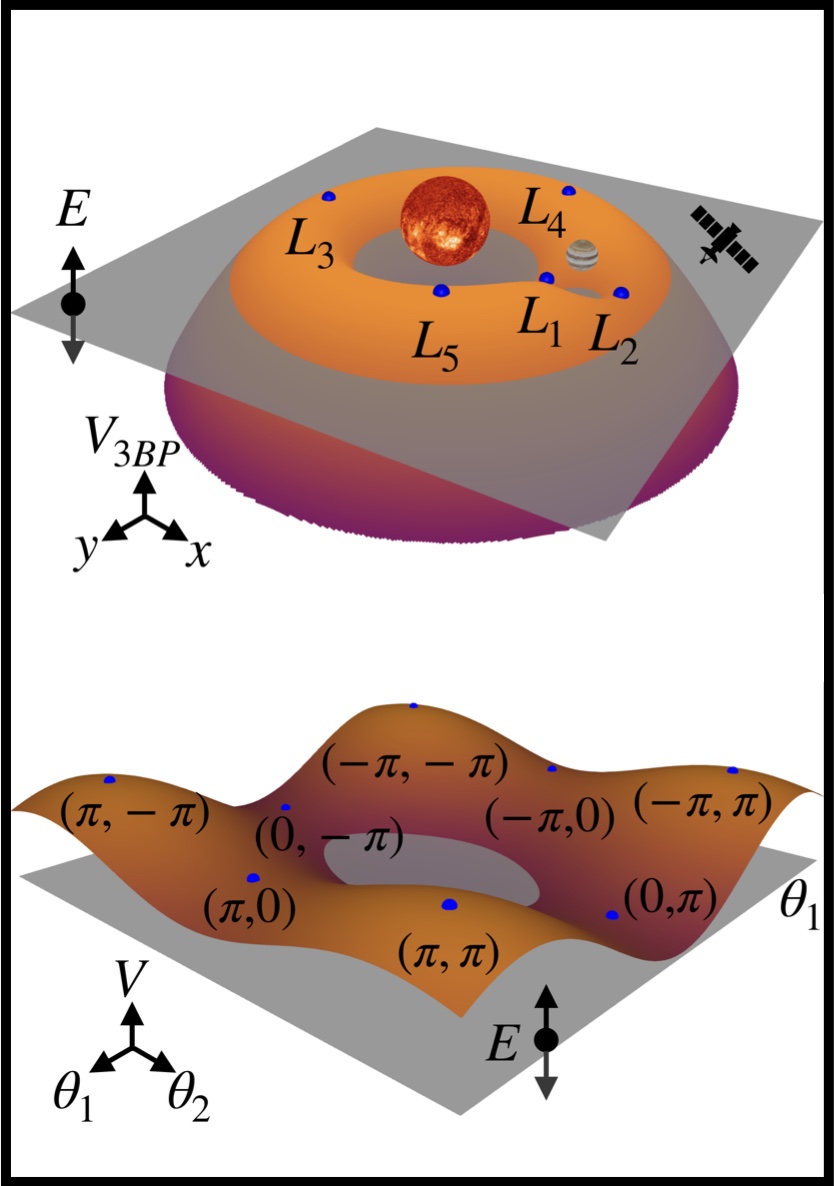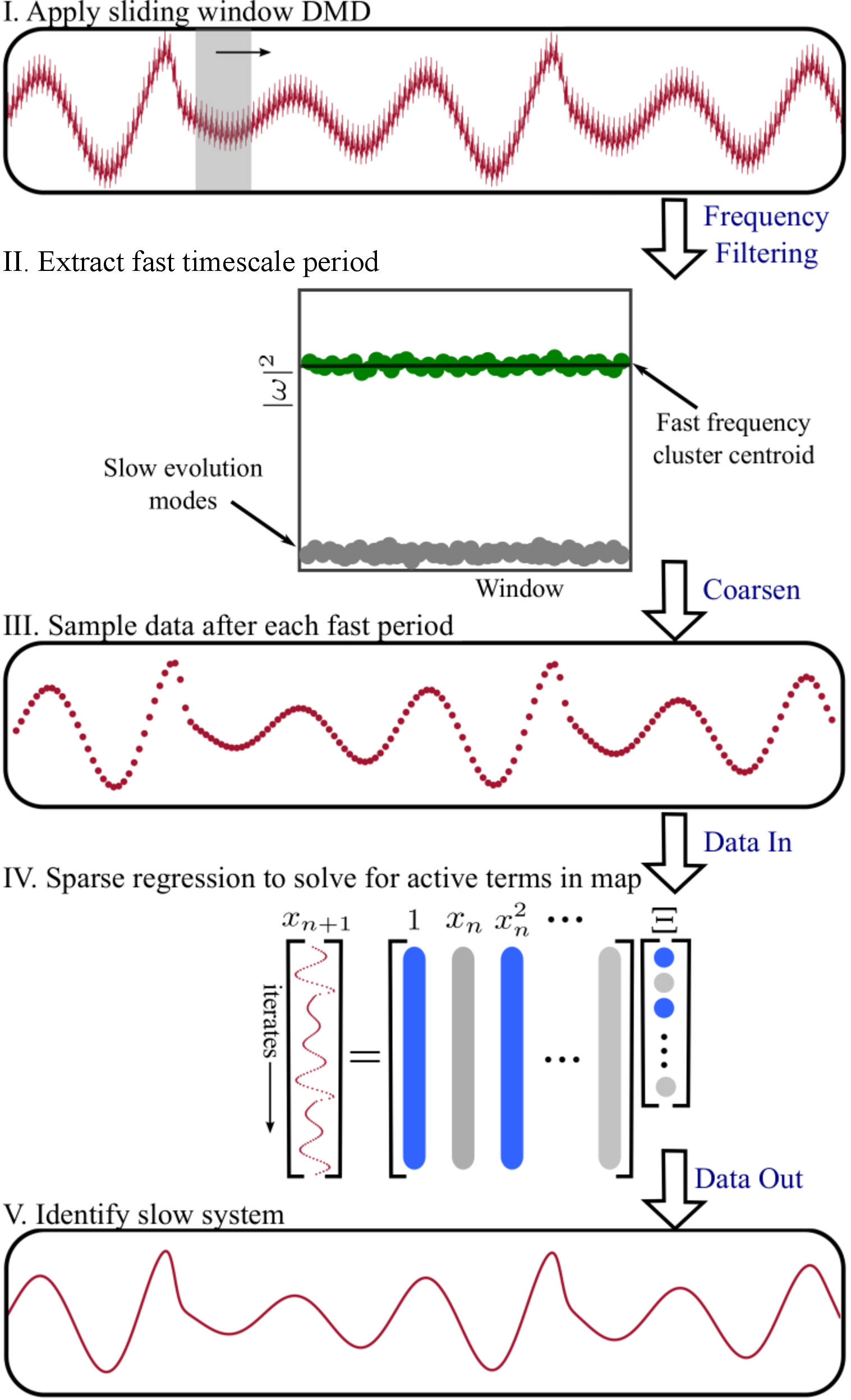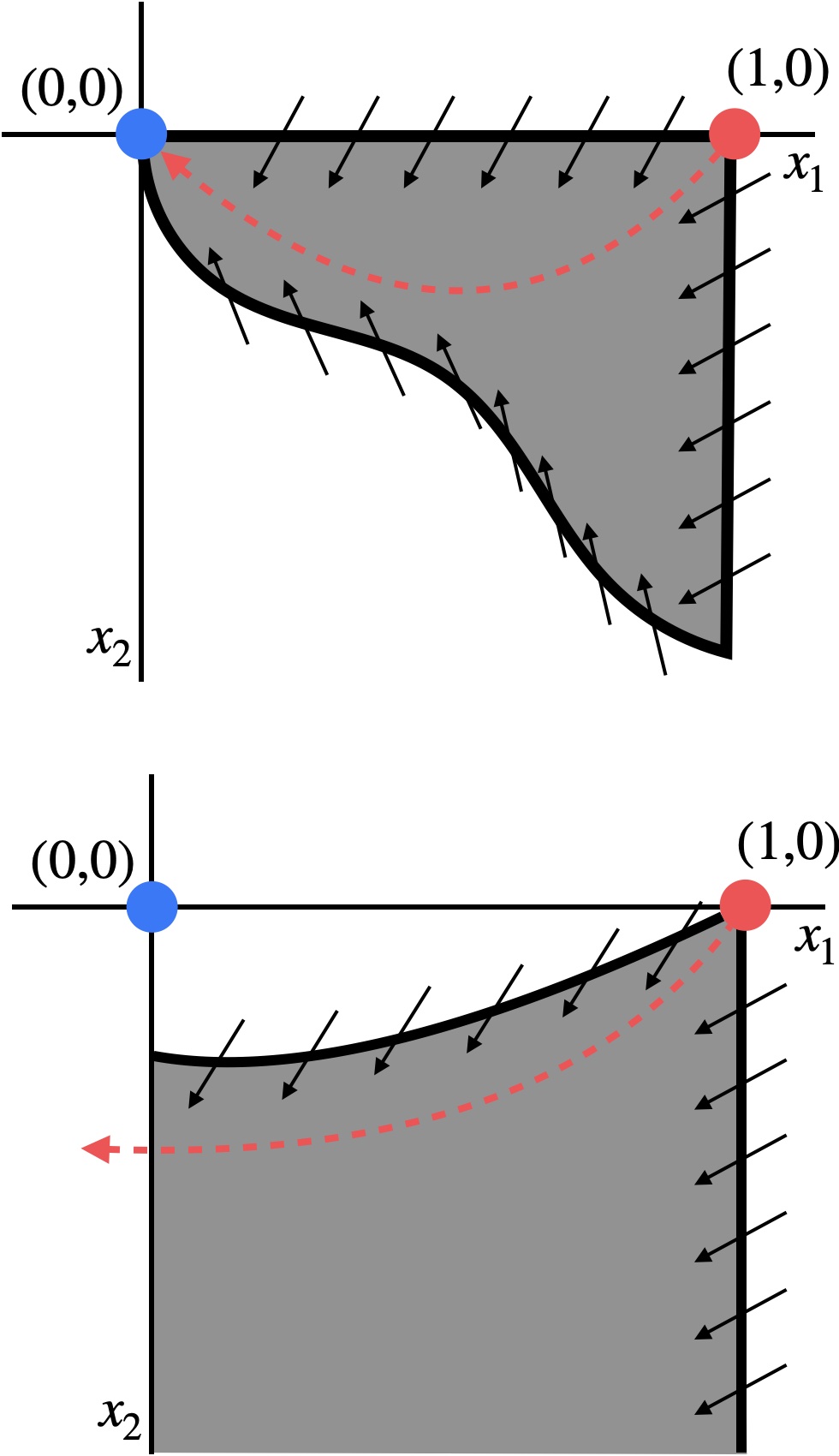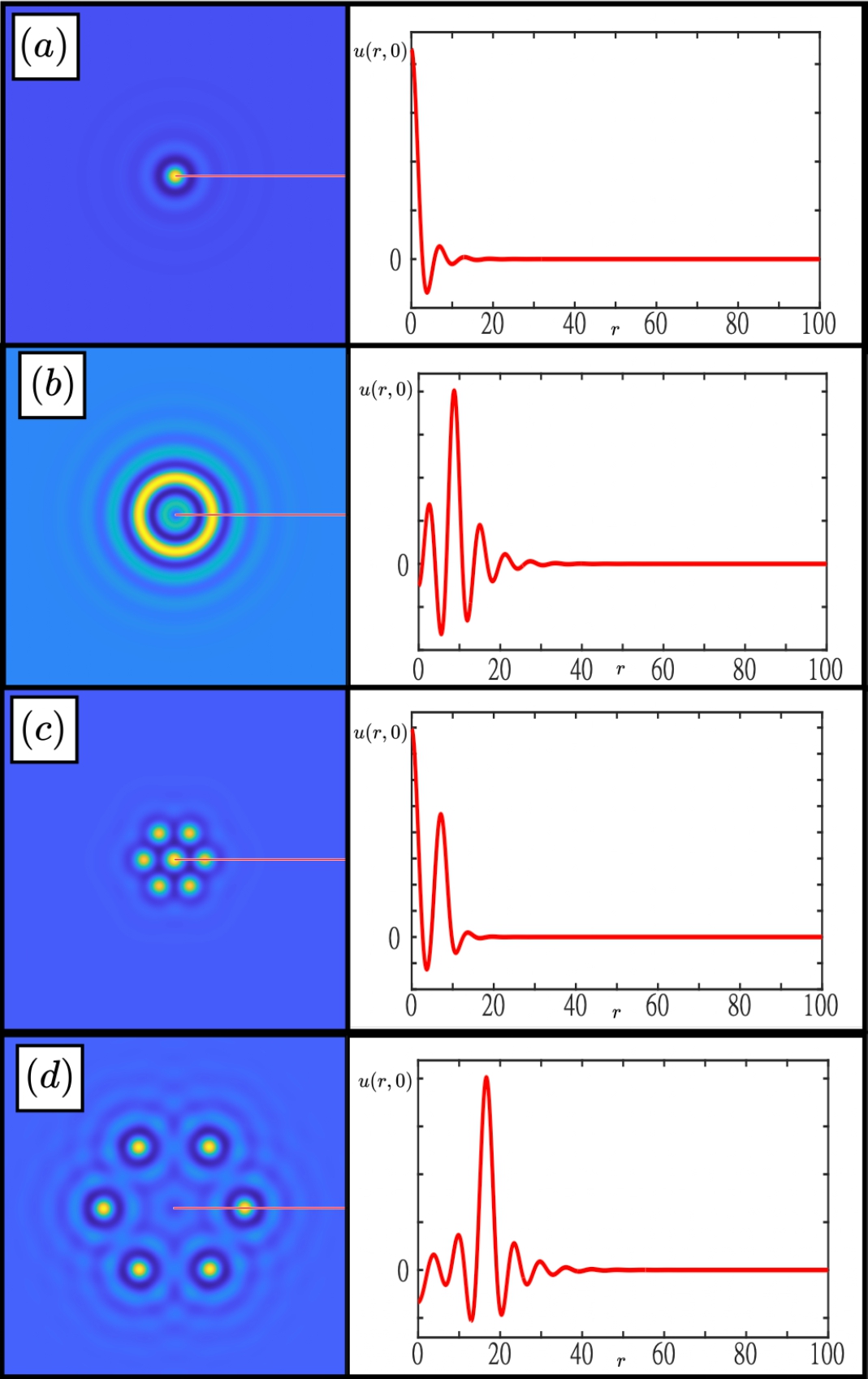
Analysis of Dynamical Systems
In the broadest sense, my interests in mathematics lie in the analysis of dynamical systems. This is an all-encompasing term to mean that I am interested in equations that change with either a discrete or a continuous 'time' variable, and can be either deterministic or stochastic. I have a particular focus on understanding complex pattern-forming behaviour, typically in the form of nonlinear waves and coherent structures in spatially-extended systems, including, but not limited to, partial differential equations, non-local equations, and spatially-discrete lattice dynamical systems. Examples of waves and patterns that I continue to focus my research on are spiral waves, spatially-localized steady-states (see below), and spatio-temporal chaotic attractors. My approach brings together tools from real and functional analysis, graph theory, topology, and geometry, and unites them with state-of-the-art computational methods, such as semi-definite programming, machine learning, and computer-assisted proofs. It is through this unification of computation and analysis that my work also seeks to develop computational tools that are motivated by the theory I have developed over my career as a dynamical systems analyst.


